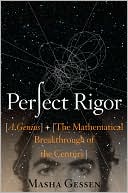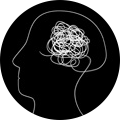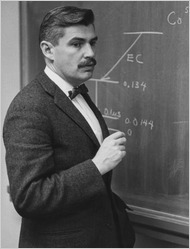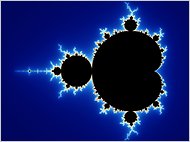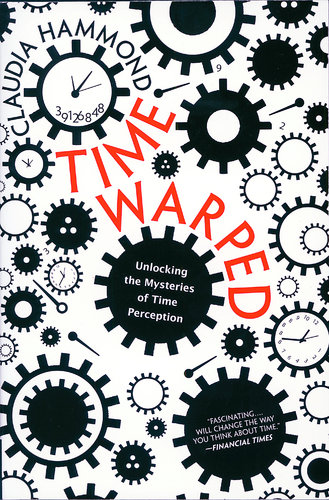Art Teams With Science to Explain It All to You
By JASCHA HOFFMAN
The taste of a ripe tomato, the hook of a catchy song, the scent of a lover’s hair. What is it, exactly, that drives us to seek these things again and again?
Neuroscientists who study perception are starting to discover the inner workings of the sensory mind. Starting on Monday at the New York Academy of Sciences, researchers and artists will team up to explore this new research in a series of talks called Science of the Five Senses. Their conversations will raise a question for the amateur hedonist: If we had a better understanding of the signals our bodies send to our brains, might we take more pleasure from them?
The academy, which was founded in 1817 and now has a membership of more than 25,000 scientists, has recently reached out to the general public with its Science and the City lectures.
“I wanted our live events to be at the intersection of science and culture,” said Adrienne Burke, an editor at the academy who conceived the new series. “That’s how we ended up with a singer and a food writer and an ex-magician. There is a deeper and more common connection between science and art than people tend to recognize.”
For “Science of the Five Senses” Ms. Burke asked the scientists to invite artists to explain their work. “I’m used to booking scientists,” she said. “But I was amazed that all the artists said yes right away, even Rosanne Cash.”
Ms. Cash, the country singer and songwriter, was one of a number of musicians, including Stevie Wonder, Paul Simon and Yo-Yo Ma, on the psychologist Daniel Levitin’s wish list for an evening to be held in April. The academy eventually selected Ms. Cash, who underwent brain surgery last year. Before her operation she had written to the well-known neurologist Oliver Sacks to ask whether she would lose the ability to play music. (She did not.)
“My brain was being crushed; I was in a lot of pain,” Ms. Cash said in an interview. “At first it was dark humor, then it was panic, but then I really got interested in the science of the brain.”
The series will begin with a discussion using excerpts from the documentary “Touch: The Forgotten Sense,” directed by the Danish-born filmmaker Kun Chang, which follows a woman who has been deprived of all bodily sensation by a virus.
“People generally don’t think about losing the sense of touch because we take it for granted,” said Mr. Chang, who recently regained feeling in his own fingers after lifting boxes in a move. “It’s the first thing we get and the last thing we lose. But it has an impact on everything we do.”
The Mexican neuroscientist Ranulfo Romo, who has studied how monkeys and humans store memories of touch, will comment on the science behind the film. He is likely to explain how it is possible for a man to crack a safe with his fingertips, and how a blind and deaf child can read his mother’s lips by placing his hand on her face to feel the vibrations as she talks. This will be Dr. Romo’s first collaboration with an artist.
Next on the agenda will be smell, which can signal the presence not just of food and loved ones but also of predators and sewage. In December the Rockefeller University olfactory researcher Leslie B. Vosshall will join the scientist Avery Gilbert, whose position as consultant for the perfume industry and author of the popular book “What the Nose Knows: The Science of Scent in Everyday Life” appear to qualify him for the role of artist. Among the topics they will cover: Can smells trigger memories? Does body odor really attract mates, and if so, why do we cover it with perfume? What makes some of us insensible to certain scents?
“People are notoriously bad at judging whether they have a good sense of smell,” said Dr. Vosshall, whose lab has discovered a gene that controls how people perceive the odor of male sweat. “From sexuality to food to poison, it’s a very emotionally loaded sense.”
In one of the more unusual pairings, Christof Koch, a neuroscientist at the California Institute of Technology who studies vision and attention, will enlist the master pickpocket Apollo Robbins, who has relieved members of the Secret Service of their watches and wallets, to demonstrate a variety of visual illusions on Jan. 12. The two met last year in Las Vegas at a meeting of the Association for the Scientific Study of Consciousness, where Mr. Robbins performed a public pickpocketing.
“I’ve become quite the armchair student of science,” said Mr. Robbins, who recently published a paper titled “Attention and Awareness in Stage Magic” in the prestigious journal Nature Neuroscience. Written in collaboration with psychologists and magicians, the article explained how performers can achieve tricks like spoon-bending by exploiting the habits of eyes and brains.
At the academy Dr. Koch plans to explain Mr. Robbins’s sleight of hand using the latest cognitive research. For the grand finale, however, it will be up to the audience to guess Mr. Robbins’s methods.
“I really live and breathe science, but I still want to have a sense of the mystery of things,” Dr. Koch said. “Both of us are manipulating attention. He does it for entertainment purposes, and I do it to study consciousness.”
For her co-presenter, the taste researcher Linda Bartoshuk invited the chef and author Harold McGee to join her. Although Mr. McGee expressed some hesitation about the term “supertaster,” which Dr. Bartoshuk coined to describe people who have a gene that makes them more sensitive to bitter compounds, he said they would distribute taste strips so audience members could test themselves for the trait.
Mr. McGee, who is about to begin work on a treatise on the science of flavor, said he hoped research into the mechanics of taste would help not so much in the creation of “crazy or novel” dishes as in helping ordinary diners “get greater pleasure out of the foods we already like, and maybe extending the range of things we’re interested in trying.”
He cited the example of the British chef Heston Blumenthal, who recently surprised food chemists when he discovered that the flavor in tomatoes is concentrated in the jelly around the seeds.
For her part, Ms. Burke of the academy said she was hoping the series could reveal the science behind a more commonplace mystery. “We all know what songs we end up humming all day,” she said, and she is looking forward to hearing Dr. Levitin and Ms. Cash explain “what’s going on in your brain that makes that happen.”
“Hooked on a Feeling: The Science of Touch,” with Kun Chang and Ranulfo Romo, will be presented on Monday at the New York Academy of Sciences, 7 World Trade Center, Lower Manhattan; nyas.org.

